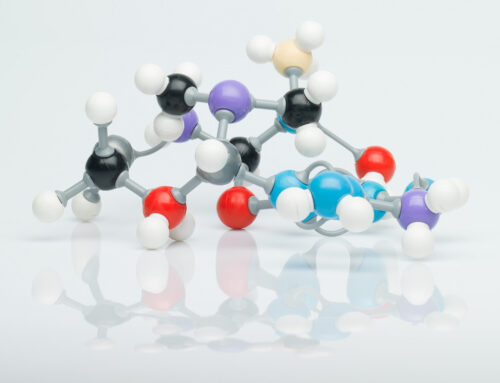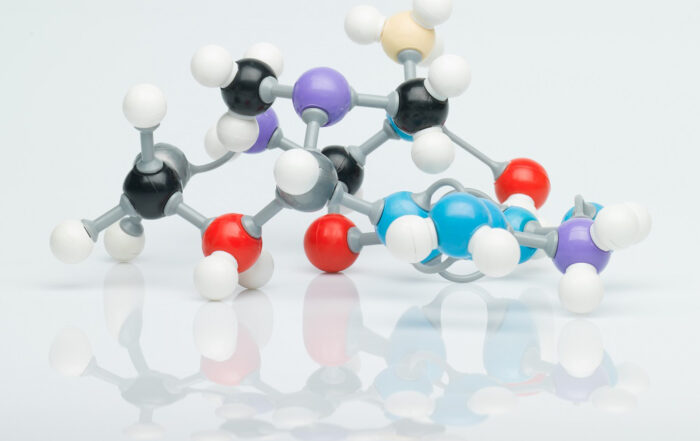Iron Deficiency Anemia in Pregnancy: Novel Approaches for an Old Problem
Abstract
Iron needs increase exponentially during pregnancy to meet the increased demands of the fetoplacental unit, to expand maternal erythrocyte mass, and to compensate for iron loss at delivery. In more than 80% of countries in the world, the prevalence of anemia in pregnancy is > 20% and could be considered a major public health problem. The global prevalence of anemia in pregnancy is estimated to be approximately 41.8%. Undiagnosed and untreated iron deficiency anemia (IDA) can have a great impact on maternal and fetal health. Indeed, chronic iron deficiency can affect the general wellbeing of the mother and leads to fatigue and reduced working capacity. Given the significant adverse impact on maternal-fetal outcomes, early recognition and treatment of this clinical condition is fundamental. Therefore, the laboratory assays are recommended from the first trimester to evaluate the iron status. Oral iron supplementation is the first line of treatment in cases of mild anemia. However, considering the numerous gastrointestinal side effects that often lead to poor compliance, other therapeutic strategies should be evaluated. This review aims to provide an overview of the current evidence about the management of IDA in pregnancy and available treatment options.
The overall iron requirement during pregnancy is significantly greater than in the non-pregnant state, despite the temporary respite from iron losses incurred during menstruation. Iron needs increase exponentially during pregnancy to meet the increased demands of the fetoplacental unit, to expand maternal erythrocyte mass, and to compensate the iron loss at delivery.1–3 In more than 80% of the countries in the world, the prevalence of anemia in pregnancy is > 20% and could be considered a major public health problem. The global prevalence of anemia in pregnancy is estimated to be approximately 41.8%.4
The fact that iron deficiency anemia (IDA) frequently develops in pregnancy even in developed countries indicates that the physiologic adaptations are often insufficient to meet the increased requirements, and iron intake is often below nutritional needs.5 Undiagnosed and untreated IDA can have a great impact on maternal and fetal health. Indeed, chronic iron deficiency can affect the general wellbeing of the mother and leads to fatigue and reduced working capacity. It can also cause pallor, breathlessness, palpitations, headaches, dizziness, and irritability. There is evidence to suggest a significant correlation between the severity of anemia, premature birth and low birth weight, intrauterine growth restriction, low neonatal iron status, preeclampsia, and post-partum hemorrhage,6,7 similarly to what occurs for other pregnancy-related diseases.8–18
Epidemiology and etiology of anemia
Anemia is a global health problem that affects approximately one-third of the world’s population. Anemia affects roughly 2 billion people.19,20 In 2010, the years of life lived with disability due to anemia amounted to 68.4 million, an increase from 65.5 million years in 1990. During this time frame (1990–2010), the prevalence rate of anemia decreased from 40.2% to 32.9%, but more for males.21 Although the causes of this disorder are different, including hemoglobinopathies, micronutrient deficiencies (such as folate, vitamin B12, and riboflavin), schistosomiasis, parasites, acute and chronic infections, and chronic kidney disease,20,22 the World Health Organization (WHO) estimates that iron deficiency accounts for 50% of cases.19
In most instances, IDA occurs in areas with chronic malnutrition (50–80%); nevertheless, iron deficiency conditions without anemia are also a common health problem in developed countries (up to 20%).22 The prevalence of iron deficiency may vary according to different conditions, as it occurs with other nutritional deficiencies.23–28 Women and young children are more at risk of IDA; this disorder prevails in infancy (47%), pregnant women (42%), and women of reproductive age (30%).29
Iron deficiency anemia in women of reproductive age
In 2011, 29% (496 million) of non-pregnant women and 38% (32.4 million) of pregnant women aged 15–49 years were anemic, of which about 20 million had severe anemia.30 Although IDA is most frequent in low-income countries, recent data show that 40–50% of European non-pregnant women have low iron body stores.31 Women are known to have a much higher iron deficiency prevalence compared to men of the same age; the prevalence rate is about 10-times higher than males. This difference is mostly due to regular blood loss during menstruation, which is often associated with low iron intake.32,33 Adolescent girls are particularly vulnerable to this condition because of the elevated iron request for rapid growth, and menstrual blood loss.34,35 Furthermore, several conditions can play a determinant role in favoring insufficiency of iron in women, such as chronic gynecologic bleeding due to uterine fibroids,36–38 endometriosis,39–44 adenomyosis, or endometrial hyperplasia. Moreover, intestinal malabsorption problems, frequent blood donation, and benign and malignant gastrointestinal lesions are other causes of IDA in women.32,33,45
Clinical impact of iron deficiency in women
Iron is an essential element involved in various physiological functions and cellular activities. It represents a cofactor for many enzymes, and it is involved in the oxygen transport by hemoglobin (Hb) in red blood cells and also in different cellular processes, including DNA synthesis and oxidation-reduction reactions.46 Furthermore, animal models have suggested a role for iron in brain development and function. Inadequate iron levels determine a decrease of enzyme function and low red blood cell production with a consequent reduction of oxygen supply to tissues. Because of these effects, iron deficiency and IDA can cause a wide range of physical and cognitive effects.45,46 The clinical presentation of iron deficiency/IDA is often characterized by various symptoms that include fatigue, irritability, weakness, hair loss, and poor concentration and work performance based on the severity of the condition.47
Iron deficiency anemia in pregnant women
IDA is a frequent condition during pregnancy. The global prevalence of anemia in pregnancy is estimated to be approximately 41.8%4; nevertheless, the percentage of iron deficiency without anemia is unknown. The overall iron requirement during pregnancy is significantly higher than in the non-pregnant state, despite the temporary respite from iron losses incurred during menstruation. This is due to an exponential increase of iron needs to expand the plasma volume, produce a greater quantity of red blood cells, support the growth of fetal-placental unit, and compensate for iron loss at delivery.1–3 The physiological iron demand in pregnant women corresponds roughly to 1000–1200 mg for an average weight of 55 kg. This quantity includes almost 350 mg associated with fetal and placental growth, about 500 mg associated with expansion in red cell mass, and around 250 mg associated with blood loss at delivery. In the course of gestation, iron need presents a variation with a growing trend; in fact, there is a lower iron necessity in the first trimester (0.8 mg/day) and a much higher need in the third trimester (3.0–7.5 mg/day). At the beginning of pregnancy, approximately 40% of women show low or absent iron stores, and up to 90% of women have iron reserves of < 500 mg, which represent an insufficient amount to support the increased iron needs.48,49 An overt IDA frequently develops in pregnancy even in developed countries, indicating that the physiologic adaptations are often insufficient to meet the increased requirements, and iron intake is often below nutritional needs. IDA in pregnancy, if not diagnosed and treated, can have a significant impact on maternal and fetal health.5
Maternal and fetal consequences of iron deficiency anemia
Pregnant women with IDA show various symptoms, including pallor, breathlessness, palpitations, hair loss, headaches, vertigo, leg cramps, cold intolerance, dizziness, and irritability. IDA can also lead to reduced thermoregulation, fatigue, poor concentration, reduced working capacity, decreased maternal breast milk production, and maternal iron stores depletion during the postpartum period.7,19 Furthermore, the risk of postpartum depression is significantly increased in comparison with pregnant women without iron deficiency; fatigue and depression, due to anemia, may negatively influence the mother-child relationship.50–52 In addition, pregnant women with IDA have an increased risk of developing complications such as increased susceptibility to infections, cardiovascular insufficiency, eclampsia, higher risk of hemorrhagic shock, or need of peripartum blood transfusion in cases of heavy blood loss. The risk of maternal mortality has a direct correlation with the severity of IDA.53
IDA is associated with increased risks of low birth weight and preterm delivery, especially in cases that iron deficiency occurs in the first and second trimester of pregnancy. However, in other cases of anemia, a small increase of these risks has been highlighted. Conversely, in pregnant women during the third trimester, the risk of preterm delivery is markedly attenuated. The increase of preterm delivery in pregnant women is also related to the severity of anemia. In cases of moderate or severe anemia, the risk is roughly doubled, whereas in mild anemia it is raised by approximately 10–40%.54
IDA during pregnancy can lead to placental problems, death in utero, infections, and low iron stores in newborns.7,55 Iron plays a vital role as a cofactor of enzymes and protein involved in the processes of development of the central nervous system. Therefore, iron deficiency might be associated with significant consequences. Indeed, early iron deficiency alters morphology and metabolism of brain cells, has a negative impact on oligodendrocytes altering myelination, and compromises neurotransmission. For all these reasons, iron deficiency increases the risk of poor cognitive, motor, social-emotional performances, and interferes with neurophysiologic development.56,57
Diagnosis of anemia during pregnancy
The definition of anemia recommended by the Centers for Disease Control and Prevention is “a Hb or hematocrit (Hct) value less than the fifth percentile of the distribution of Hb or Hct in a healthy reference population based on the stage of pregnancy”.58 Current classification lists the following levels as anemic: Hb (g/dL) and Hct (percentage) levels below 11 g/dL and 33%, respectively, in the first trimester; 10.5 g/dL and 32%, respectively, in the second trimester; and 11 g/dL and 33%, respectively, in the third trimester.58 Because of the numerous adverse consequences on maternal and fetal health that IDA causes during pregnancy, early diagnosis is essential.
Laboratory evaluation is fundamental for a definitive diagnosis of iron deficiency and IDA. As the etiology of anemia includes various causes, the diagnosis cannot be based only on Hb values. For diagnostic clarification, it is necessary to evaluate red blood count and serum ferritin (SF) levels. The most reliable parameter to revel iron deficiency is SF, and screening of SF concentration at the beginning of pregnancy is recommended.59 If SF is < 30 g/L, there is a high probability that iron stores are depleted, even in the absence of anemia. A SF value < 30 g/L is associated with an Hb concentration < 11 g/dL during the first trimester, < 10.5 g/dL during the second trimester, and < 11 g/dL during the third trimester are diagnostic for IDA in pregnant women.60 Iron therapy should be considered in such cases. However, in the presence of inflammatory processes or chronic diseases, ferritin levels can be falsely normal or elevated, despite the presence of anemia. This is because ferritin reacts as an acute-phase protein. The evaluation of C-reactive protein (CRP) levels may assist in obtaining the correct diagnosis, excluding infections or inflammation. If the CRP value is elevated, re-evaluation of the SF level is recommended after the normalization of CRP concentration. Repeating SF levels measurement afterward during pregnancy is not necessary if the patient does not show symptoms of anemia. Conversely, Hb concentration should be measured in each trimester. When ferritin levels are3 30 g/L, apart from measuring CRP levels, it is necessary to carry out other diagnostic investigations such as the determination of transferrin saturation and serum iron.53,60–62
If the level of ferritin is normal, a serum transferrin value < 15% proves a latent iron deficiency because more iron is released from blood circulation by transferrin to ensure erythropoiesis. Serum iron levels are susceptible to fluctuation diurnal, intra- and inter-individual, so, usually, the assessment of serum iron and transferrin levels helps in diagnosis, though the SF represents the right tool.53
Another parameter that could be useful to detect iron deficiency during pregnancy, in the case of normal ferritin values and elevated CRP, is transferrin receptor (sTfR). It shows an increase in cases of iron deficiency or greater iron cellular demand. During pregnancy, the increase of sTfR values is related to increased stimulation of erythropoiesis and a major iron requirement due to iron-dependent cell proliferation. Low concentrations of sTfR in the first period of pregnancy seem to be associated with an inhibited erythropoiesis in the first trimester, as some studies have shown. Moreover, sTfR concentration is not influenced by infections or inflammatory reactions.53,62
For the differential diagnosis with other causes of anemia, such as hemoglobinopathies, infections, or chronic kidney disease, further investigations are needed. In particular, Hb electrophoresis or chromatography is indicated to exclude genetic diseases such as β-thalassemia. In cases of megaloblastic anemia, vitamin B12 should be measured since vitamin B12 deficiency is a common condition. Folic acid deficiency anemia, instead, is less frequent.53,61
Treatments of anemia during pregnancy
prophylaxis
There is poor evidence about the effect of iron prophylaxis in pregnancy in determining a reduction of global iron deficiency prevalence and, consequently, a decrease of maternal and fetal complications. Therefore, the risk and benefit of preventive iron supplementation are debated.63,64 The WHO promotes daily iron supplementation during pregnancy for women who live in areas with a high prevalence of iron deficiency because the administration of prophylactic iron in women with low iron stores represents a significant benefit.65 Nevertheless, iron prophylaxis is also used in industrialized countries.
The right dosage for prophylactic iron supplementation is unclear; current guidelines indicate 60–120 mg elemental iron/day.65 Lower doses show no effect; instead, dosages3 120 mg/day involves an increase of unwanted side effects and consequently lead to poor compliance.55
Treatment
The choice of the correct treatment of anemia depends on its cause and severity. The time remaining until delivery, the severity of anemia, additional risks, maternal comorbidity, and patients’ wishes are important factors that must be considered when deciding the therapeutic approach.66 The routes of iron administration include oral and parenteral ones. Parenteral iron therapy is indicated in pregnancy from the second trimester onwards. The most appropriate parenteral route is the intravenous; intramuscular iron therapy is generally not recommended because intramuscular iron absorption is slow and, in addition, intramuscular injections are painful and can be associated with some inconveniences such as the development of sterile abscesses. Moreover, this route of iron administration is not less toxic or safer than the intravenous one.60
Oral iron
Oral iron administration represents the first line of management recommended in pregnancy in case of mild IDA and iron deficiency without anemia. The different oral iron formulations are iron (II) salts, iron (III) polymaltose complex, and
liposomal iron.3,61
Iron (II) salts
Three ferrous iron salts are available: ferrous sulfate, ferrous gluconate, and ferrous fumarate. None of them seems better than the others, and they show comparable rates of side effects.67
The standard is to prescribe elemental iron daily at doses of 100–200 mg to women with IDA.47 A dose of iron supplementation below 100 mg/day is currently considered inadequate by several authors.61 Ferrous salts present low and variable absorption rates. Their absorption can be limited by mucosal luminal damage as well as by the ingestion of certain foods; so, it is indicated that administration one hour before meals on an empty stomach with a glass of orange juice or another form of vitamin C to favor absorption.68 Nevertheless, it is still unclear whether weekly or intermittent administration of oral iron is equivalent to daily administration.69 Follow-ups should be performed after 2–4 weeks to evaluate the effectiveness of the treatment. After the normalization of the Hb values, oral iron administration should be continued for at least another 4–6 months until a ferritin level of roughly 50 ng/mL, and transferrin saturation of at least 30% have been obtained.53
Iron (III) polymaltose complex
One of the few available oral iron (III) compounds is the iron (III) polymaltose complex (IPC) dextriferron. It belongs to the class of slow-release preparations; the polymaltose, acting as an envelope around the trivalent iron, allows a slower iron release from the complex, with a consequent reduction of the rate of side effects, compared with iron salts. Furthermore, its bioavailability is increased when taken with meals. The dose recommended is 100–200 mg/day. Compared to iron salts, IPC has equal effectiveness but a superior safety profile, as some studies have shown.70 There are only a few studies related to the use of iron polymaltose (IP) during pregnancy, but no serious adverse events have been reported so far.71
Liposomal iron
Liposomal iron, a preparation of ferric pyrophosphate associated with ascorbic acid and conveyed within a phospholipid membrane, is a new-generation oral iron that shows a high bioavailability and a low incidence of side effects, due to lack of any direct contact with the intestinal mucosa.3,72 Minimal data are available about its use during pregnancy.3
Intravenous (IV) iron
Oral iron therapy can be switched to IV therapy in some clinical conditions such as a weak or absent response to oral iron, low absorption due to intestinal disease, intolerance of oral iron, lack of compliance, or the need for rapid and adequate treatment (bleeding due to placenta praevia, advanced gestational age, etc).61,66
Previous formulations of IV iron were responsible for undesirable and sometimes severe side effects such as anaphylaxis, shock, and death that led to their limited use. Conversely, the new type of iron complexes developed in the last years guarantees a higher efficacy, safety, and better compliance. The use of iron dextran has been limited in pregnancy due to the high rate of adverse reactions, even serious ones. No severe adverse effects have been shown with the use of iron gluconate; however, this approach is not very practical as it requires multiple infusions with high healthcare costs and reduced patient compliance.69 The maximum single dose is 125 mg. It has low molecular stability and is not indicated for use during the first trimester.60 As the IV iron bypasses intestinal iron absorption and the link to protein binding, it represents an optimal alternative to oral iron therapy. The new formulations bind iron more tightly to the carbohydrate core, so favoring a decrease of free iron released, which is toxic. Free iron leads to cell and tissue damage due to peroxidation, as it causes the production of reactive oxygen species such as hydroxide and oxygen radicals; therefore, the severe consequences related to free iron are limited. The most recent products of IV iron allow the use of high doses in a single administration.73
Different IV iron formulations are recommended for the treatment of IDA such as ferric carboxymaltose (FCM), iron sucrose (IS), and IP.74
Iron sucrose
IV IS complex shows a side effect profile better than oral iron, and is safe and efficacious in pregnancy.75 Studies show an increase of the Hb concentration in 28 days from 1.3 to 2.5 g/dL compared with 0.6 to 1.3 g/dL in the groups treated with oral iron.53 The maximum dose in a single administration should not exceed 200 mg. The infusion time should be at least 15 minutes for 100 mg and 30 minutes for 200 mg.60
Iron polymaltose
IV IP shows significant effectiveness in terms of improvements in hematological parameters. Yet, it is associated with elevated rates of adverse reactions such as headache, symptomatic hypotension, back pain, heartburn, chest tightness, dyspnea, nausea, tachycardia, rash, and vomiting.76,77 For IP, the maximum dose in a single administration may be over 2500 mg. The infusion time for the maximum dose is approximately 4–5 hours.74
Ferric carboxymaltose
FCM, Ferinject® is the first-choice preparation in cases in which IV iron therapy is recommended in pregnancy. FCM presents high molecular stability. In several randomized studies, Ferinject was found a safe and effective IV iron product in pregnancy and also presented a low percentage of undesirable side effects compared to oral iron. Furthermore, FCM does not cross the placenta.53,60,61,78 The maximum daily dose is 1000 mg/20 mL. The administration rate should be 100–500 mg/min. Administration time is a minimum of 15 minutes for doses of 500–1000 mg.60
Discussion
Because of the remarkable impact of IDA on maternal and fetal health, iron therapy is strongly recommended. The effectiveness of iron supplement for the treatment of iron deficiency is documented by clinical trials involving pregnant women.79
The use of liposomal iron might represent a promising strategy of oral iron treatment in pregnant women with IDA. This compound shows a high gastrointestinal absorption and bioavailability and a low incidence of side effects. Therefore, liposomal iron presents good tolerability and favors better compliance than iron salts.3,72
In pregnancy, a frequent alternative treatment to oral iron, when it is not indicated, is IV iron. The new formulations of IV iron therapy promote a higher, as well as faster, increase of Hb concentration and SF levels than oral iron supplementation, as was already shown in different studies.60,61 In comparison to oral iron, ICM guarantees a more rapid correction of anemia and also an evident improvement of quality life with a lower rate of symptoms such as fatigue and depression. It also presents higher tolerability and, consequently, greater compliance than oral iron. As the carbohydrate moiety binds the elemental iron more tightly, high doses of FCM (about 1000 mg in a single administration with a short infusion time) are allowed, thus guaranteeing an improvement in compliance and an abatement of costs due to repeated administrations. Compared to IS, FCM shows greater effectiveness and a comparable rate of safely profile, despite the dosage in a single administration is much higher. On the contrary, the maximum dose of IS in a single administration should not exceed 200 mg doses, because the sucrose portion binds elemental iron less tightly.53,60,61,78
In the last decades, new formulas with a higher bioavailability and fewer side effects have been promoted. Liposomal vesicles have drawn the attention of researchers as potential carriers of various bioactive molecules that could be used for therapeutic applications in humans and animals. Several commercial liposome-based drugs have already been discovered, registered, and introduced with great success on the pharmaceutical market.80
Liposomal iron, a preparation of ferric pyrophosphate associated with ascorbic acid and conveyed within a phospholipid membrane, is a new-generation oral iron which shows a high bioavailability and a low incidence of side effects, due to lack of any direct contact with intestinal mucosa.3,72
Encapsulation of iron in a micronized form in liposomes represents a new promising strategy for oral iron therapy, and it is associated with better gastrointestinal absorption, higher bioavailability, and a lower incidence of side effects.13
Liposomal carriage favors lesser exposure to gastric contents and allows targeted delivery and the administration of lower doses due to direct absorption into the bloodstream without the need for protein carriers.81
The use of lower doses of liposomal iron proves to be effective compared to usual doses of ferrous sulfate. During pregnancy, liposomal iron significantly increases Hb and ferritin values, as suggested by clinical evidence. This guarantees to reduce the gastrointestinal adverse effects associated with non-capsulated conventional oral iron. Therefore, liposomal iron presents good tolerability and favors better compliance than iron salts.3,72
Conclusion
IDA in pregnancy is a public health problem. Given the significant adverse impact on mother and fetus outcomes, early recognition and treatment of this clinical condition are fundamental. IV iron represents a common alternative treatment, in case of oral iron intolerance or poor compliance, and the new formulations of IV iron show a good safety profile and high effectiveness. IV iron administration is associated with some drawbacks, such as the necessity to move to the hospital and the loss of working hours. Liposomal iron seems to be a promising new strategy of iron replacement. It is effective and well-tolerated, thus ensuring
greater compliance.






Leave A Comment